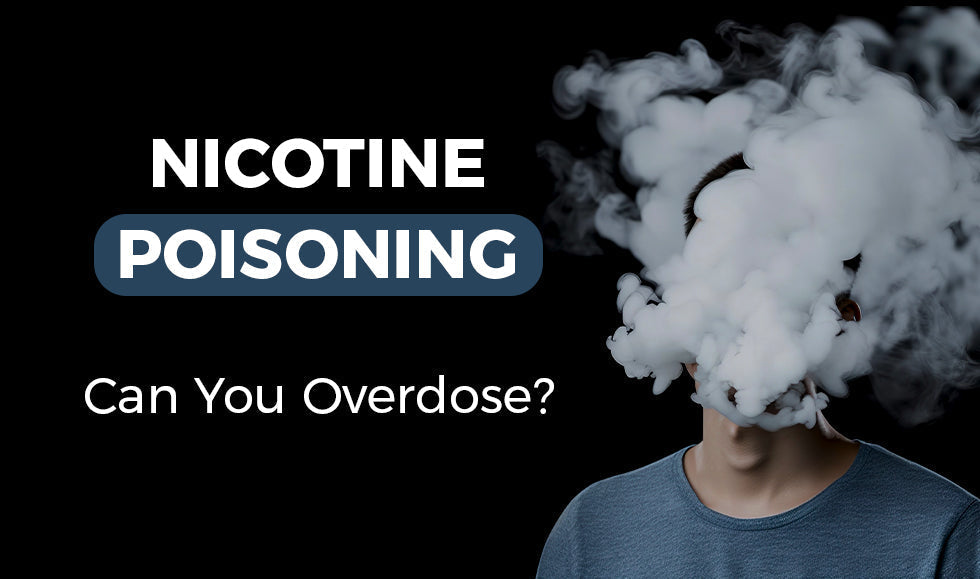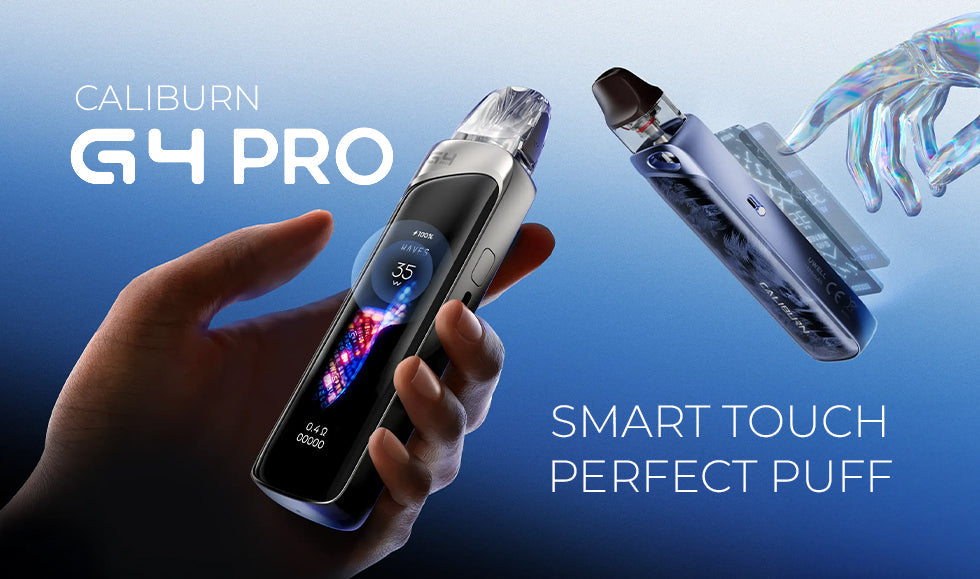Nicotine poisoning is a misunderstood hazard among nicotine users. Many daily consumers aren't sure what constitutes nicotine poisoning. With vaping's popularity, more people risk exposure to nicotine toxicity. Fortunately, avoiding it is easy, as we'll explain.
What is Nicotine Poisoning?
Nicotine poisoning refers to the effects of consuming more nicotine than one’s body can handle at any given time, and its symptoms and severity can range quite a bit. Technically, nicotine poisoning is a nonlethal and short-lived condition that many nicotine consumers experience, especially when they’re inexperienced. Nicotine toxicity, which we will get into more in a little bit, is a far more severe and potentially deadly condition caused by ingesting nicotine.
Symptoms and Effects
Let’s talk about nicotine poisoning, in its nonlethal form, which occurs when one smokes or vapes too much nicotine. The symptoms can, again, vary and can range from uncomfortable yet mild to severe to the extent that a person feels physically unwell for hours. Symptoms include:
- Nausea/vomiting
- Headache
- Shakiness/tremors
- Diarrhea/upset stomach
- Dehydration
- Sweating
- Confusion
- Irritation
- Anxiety
- Dry mouth
- Increased heart rate
- Lightheadedness
Risk Factors
So, who is more likely to experience nicotine poisoning? That’s a good question, as it can happen to anyone. But, it’s more likely to occur in those who are young, whose nervous systems have not yet fully developed. It can also happen to those who are inexperienced with nicotine, as a low tolerance makes a person more susceptible to side effects as their bodies are not used to the effects of nicotine. This is why so many people who first start smoking or vaping end up experiencing the side effects above.
Of course, those who consume too much nicotine in a short period of time are also more likely to experience nicotine poisoning. Those who chain-smoke or chain-vape can end up with side effects like the ones listed earlier.
Keep in mind that consuming above-average nicotine strengths in e-liquids can lead to nicotine poisoning. This applies to both freebase nicotine (up to 24mg) and salt nic e-juices (up to 50mg). High concentrations, especially for new vapers or former cigarette smokers, increase the risk.
Is inhaling too much nicotine dangerous? While nicotine isn't known for major long-term harm, it can be particularly risky for those with heart or nervous system conditions. Symptoms like rapid heart rate, low blood pressure, and dizziness can be more severe. If you have underlying conditions, consult your doctor about your nicotine use for personalized advice.
Nicotine Toxicity vs. Nicotine Poisoning
Nicotine toxicity differs from poisoning and results from consuming nicotine in forms other than inhalation, such as ingestion. Vaping introduces a new risk: e-liquids can be ingested accidentally by household members, including pets or children, which can be fatal. Ingesting nicotine can cause toxicity within the nervous system that can lead to death, so never ingest vape juice, if you’re someone who purchases liquid nicotine to make your own juices, be extra cautious, never leaving a bottle open and unattended.
Factors Contributing to Nicotine Poisoning
Since nicotine poisoning can range from mild to severe, there are some factors that can put a person most at risk of experiencing this (not nicotine toxicity). Let’s examine further.
Nicotine Levels in E-Liquids
The concentration of nicotine in e-juice matters. Salt-based nicotine vape juices often contain 50mg, which can be too strong for beginners. Freebase nicotine e-liquids range from 0-24mg, with 24mg potentially leading to nicotine poisoning.
New vapers should start with 8-12mg of freebase nicotine or a 30mg salt nic product, gradually increasing to 50mg as tolerated. Salt nic is more potent and absorbs faster than freebase nicotine, making higher strengths less noticeable in effect.
Consumption Patterns
How frequently you vape and how deeply you inhale will also make a difference. Chain vaping, which refers to taking many puffs in short succession over long periods of time, can cause nicotine poisoning, although one can technically build a tolerance to this effect eventually if the habit is repeated enough.
Inhalation vs. Ingestion
Inhaling and ingesting nicotine are very different; ingestion can be fatal for humans and mammals. We strongly urge you to prevent anyone in your household from ingesting e-liquids or liquid nicotine products.
How Much Nicotine is Needed to Cause Poisoning?
There is no strict rule for how much nicotine causes poisoning; it varies based on personal tolerance, experience, hydration, nutrient levels, body weight, and other factors.
Understanding Toxic Nicotine Levels
The lethal dose of nicotine for an adult is estimated to be around 30–60 milligrams (mg) when it comes to toxicity. The threshold that has been determined for nicotine poisoning is as low as 0.5mg, when ingested. Again, though, no amount of nicotine is safe to ingest.
Nicotine Poisoning Should Concern You But There are Ways of Preventing It
Nicotine poisoning symptoms can occur in anyone who consumes nicotine regularly, which is why it’s imperative to recognize the basics of nicotine poisoning and what to do to monitor your levels of intake. So, it’s important also to be cautious with nicotine products and follow usage guidelines to avoid nicotine poisoning, especially for children and pets who may accidentally ingest nicotine-containing substances. If you do experience symptoms of nicotine poisoning that’re abnormal, or someone shows symptoms of nicotine poisoning, as we cannot stress this enough, seeking medical attention immediately is crucial.





